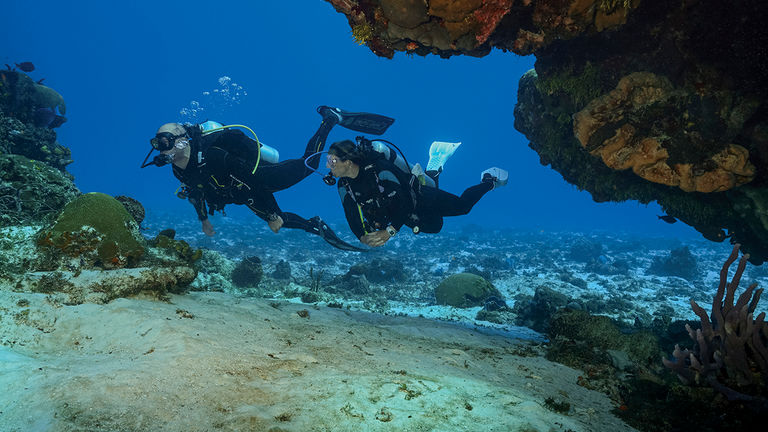The Mexican Caribbean is Mexico’s most-visited international tourism region, and it enjoys a high profile among both travelers and travel advisors. It’s also the brand used to market vacation destinations around the state of Quintana Roo and, thanks to a number of key developments, local officials predict especially strong growth for the area in the coming months.
Brand recognition has certainly helped the region stay on top. The Mexican Caribbean moniker, in fact, encompasses some of the nation’s best-known tourism hot spots — including Cancun, Cozumel and Playa del Carmen in the Riviera Maya — as well as up-and-coming destinations like Tulum, Holbox Island and Bacalar. With such a diverse portfolio, the Mexican Caribbean is well-positioned to appeal to a variety of travelers, according to Dario Flota, director of the Quintana Roo Tourism Board.
We sat down with Flota to discuss what’s driving tourism growth in the region — covering everything from increased flight capacity, strategic marketing and the new Tulum airport to the Tren Maya project and new initiatives aimed at travel advisors. Flota also advised travel agents on how to best address client safety concerns when visiting the state of Quintana Roo.
 Tourism hot spot Cozumel (where tourists can scuba dive) is a popular destination in the Mexican Caribbean.
Tourism hot spot Cozumel (where tourists can scuba dive) is a popular destination in the Mexican Caribbean.
Credit: 2022 Quintana Roo Tourism BoardHow has your destination bounced back after the first few years of the pandemic?
The combined efforts of the tourism sector, as well as the health prevention protocols that have been implemented in the Mexican Caribbean, have created a favorable atmosphere for a gradual tourism recovery. As a result, we’ve seen that the airlines are confident in the potential of the destination, scheduling more flights to the airports of Quintana Roo, with more frequencies and direct international connections for the winter season.
So, you’re optimistic about arrivals for the coming months?
Being the top region in the country in the recovery of international tourism, we expect the numbers to positively ascend during the second half of the year — even exceeding the number of airplane seats offered pre-pandemic. This June alone, Cancun International Airport received 14% more passengers than in June 2019.
How would you describe the success of the "Mexican Caribbean" branding, in terms of representing so many destinations around the state?
Some destinations had a strong reputation in the tourism sector; however, many smaller destinations were still unknown to many. The primary goal of the rebranding was to create an integrated project with independent brands led by powerhouses like Cancun and Riviera Maya. Destinations like Isla Mujeres, Holbox, Bacalar and Mahahual have started to gain more popularity.
At the end of the day, we want travelers to understand that this region can cater to everyone. From the turquoise beaches of Cancun and the cosmopolitan vibe of Playa del Carmen to the enigmatic cenotes of Tulum, visitors have endless options for exploring.
The primary goal of the rebranding was to create an integrated project with independent brands led by powerhouses like Cancun and Riviera Maya.
How is your marketing strategy evolving?
We have directed more efforts toward the digital space, implementing state-of-the-art technology to drive our strategic decisions. We continue to develop and improve what we see as the most comprehensive destination website of the country, along with marketing strategies to support the regional information visitors may seek. We are entering new platforms like TikTok to engage new markets, as well as analyzing the top markets for the destination through a modern market intelligence system.
The Tren Maya rail system that will link much of the Yucatan peninsula is expected to run through a large part of your state. What effect will it have on tourism?
We hope that this project will drive more tourists to explore off-the-beaten-path destinations, and diversify the tourism offerings in the cities where the stations will be based.
Tulum is scheduled to open a new international airport next year. How will that change the popularity of that destination?
We believe that the southern part of the state will greatly benefit from having an airport closer to its destinations. Given the popularity of Tulum, we hope travelers will be encouraged to explore other nearby destinations, as well.
How should travel advisors address client concerns about safety when visiting the Mexican Caribbean?
The safety of tourists and locals is the utmost priority, and we work diligently to provide a safe and enjoyable vacation experience for tourists and visitors. As they would in any destination, travelers should exercise caution and practice common sense.
Clients can download the free Guest Assist app — currently available in Spanish and English — which provides assistance and counseling in case of any emergency to domestic and international travelers visiting the Mexican Caribbean. It offers information on protocols for emergency situations, important information about COVID-19 and legal advice. It also includes access to a 24/7 call center that connects to bilingual operators specializing in tourist assistance.
How are you working with advisors to help them sell more of the Mexican Caribbean?
Along with allies in the industry, we have been hosting and attending travel agent events in-person across the U.S., where advisors have the opportunity to learn about the latest openings and news of the Mexican Caribbean. We will continue to organize these events in more U.S. cities in the upcoming months. In the meantime, we have an E-Learning Program available through our website, and we are also partnering with airlines, hotels and OTAs in webinars specifically created for agents.